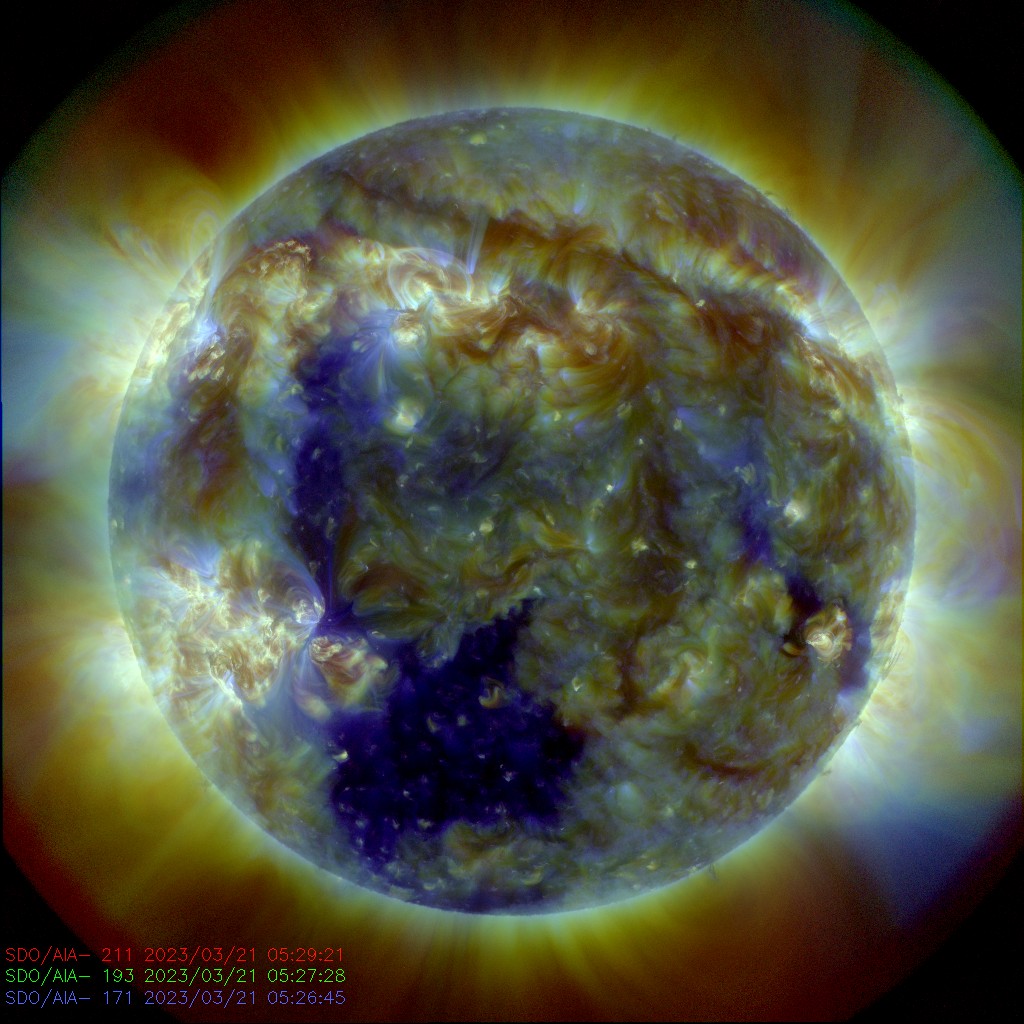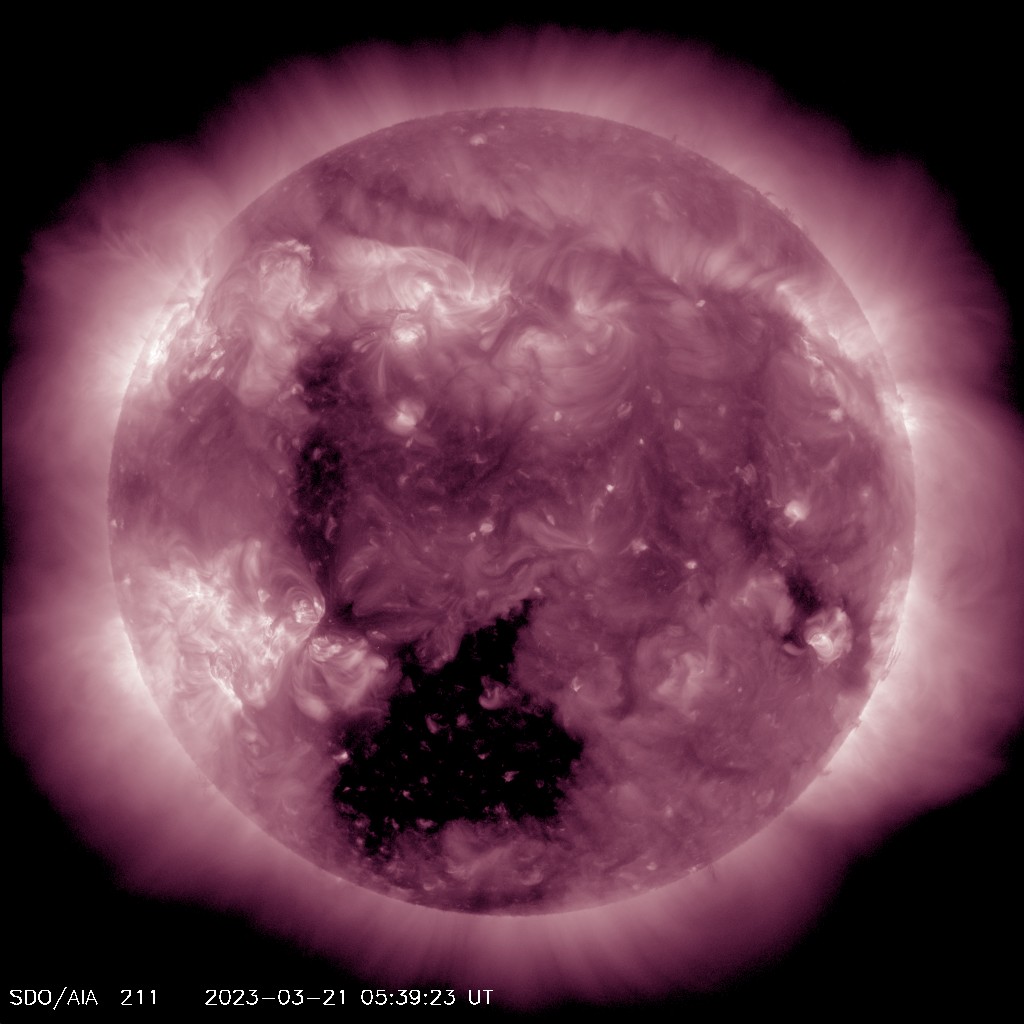Observations in extreme ultraviolet radiation showed the formation of March 20 in the solar atmosphere
Observations of the Sun in the extreme ultraviolet at a wavelength of 19.3 nm. Video: SDO, NASA
A coronal hole is a region in the atmosphereThe Sun, in which the magnetic fields open up and allow the solar wind to escape. Typically, the star's closed magnetic field lines hold the plasma in the solar atmosphere. In the region of the coronal hole, the open magnetic field allows the solar wind to escape into space much faster.
The coronal hole region is characterized by reducedtemperature and plasma density. In this extreme ultraviolet image from the Solar Dynamics Observatory, the coronal hole region appears dark due to the lower temperature of the plasma.


An image of a coronal hole taken at different wavelengths (17.1, 19.3 and 21.1 nm) and a separate image at a wavelength of 21.1 nm. Images: SDO, NASA
According to spaceweather portal experts.com the solar wind released by the open magnetic field will reach the Earth on March 23-24. For several days before and after the equinoxes, the "Russell-McPherron effect" is observed. At this time, "cracks" form in the Earth's magnetic field, into which the solar wind can penetrate. At this time, even the weakest particle streams can cause bright auroras.
Read more:
One planet can put an end to life on Earth: how scientists have proven the fragility of the solar system
Treasure found that was hidden during the war almost 1,000 years ago
Notre Dame fire helps scientists unravel the secret of the cathedral's construction